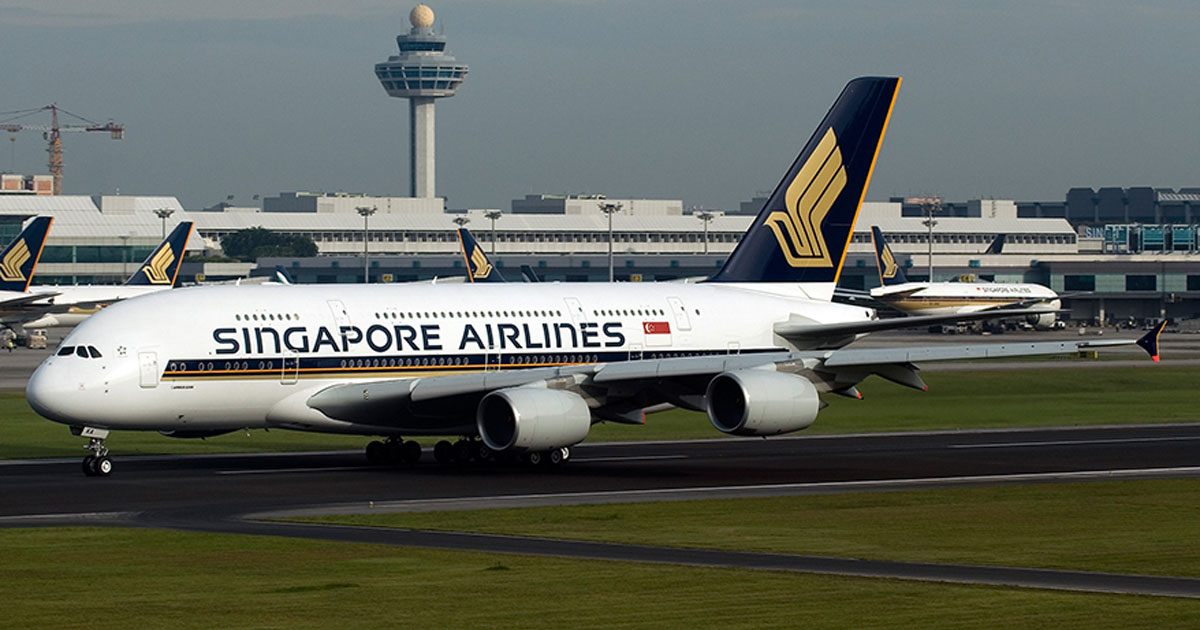According to the Civil Aviation Authority of Singapore (CAAS), a total of six flights scheduled to land at Changi Airport on Thursday, Nov. 15, were diverted to other airports.
This was reportedly due to adverse weather conditions and airspace restrictions occurring at the same time.
Three of the affected flights belonged to Singapore Airlines.
Holding patterns
Among the diverted flights were SQ861 from Hong Kong, and SQ877 from Taipei, which were both diverted to Paya Lebar Airbase after a lengthy holding pattern.
According to flightradar24, SQ877 was supposed to land at 6.55pm, but went into a holding pattern until eventually diverting to Paya Lebar Airbase at 7.50pm.
It eventually landed in Changi Airport at 10.45pm.
SQ861 was supposed to land at 7.45pm, but also went into a holding pattern before similarly diverting to Paya Lebar Airbase at 8.14pm.
It only landed in Changi Airport at 11.35pm.
The third flight, SQ977 from Bangkok, was diverted to Senai Airport in Johor, where it landed at 7.30pm.
The plane remained in Johor until 8.45pm and landed at Changi Airport at 9.35pm.
What are holding patterns?
"Holding" is a predetermined manoeuvre that keeps aircraft within a specified airspace while awaiting further clearance from air traffic control.
Essentially, holding patterns are the aircraft equivalent of a traffic jam.
The most common reason for holding is sheer volume.
Sometimes, too many aircraft attempt to land at an airport at the same time, and holding patterns are essential to ensure that planes will land in an orderly manner.
Although most international airports have comprehensive initiatives designed to space out arrivals, holding is often required when a series of delays cause a bottleneck.
Bad weather can also cause the need for holding, as pilots require clear visibility of both the airport environment and other aircraft traffic before they are allowed to attempt landing.
Without clear visibility, aircraft often go into a holding pattern until visibility clears up to ensure maximum safety.
Holding patterns are relatively common, but diversions as a result of holding are not particularly common.
While planes usually carry contingency fuel, a delay may sometimes exceed the aircraft's fuel.
In this case, aircraft get diverted to an alternative airport, while waiting out the delay on the ground, before proceeding to the original destination.
Airspace restrictions
The diversions have been attributed partly to airspace restrictions.
The Asean Summit 2018 took place from Nov. 11 to Nov 15.
World leaders such as Russian President Vladmir Putin, Chinese Premier Li Keqiang, Canadian Prime Minister Justin Trudeau and Malaysian Prime Minister Mahathir Mohamad were all in Singapore for the five-day conference.
With so many world leaders gathered here, security is naturally tight.
During the Trump-Kim summit held earlier this year, the CAAS announced a period of restricted airspace over Singapore, warning travellers that there will likely be delays for flights arriving in and departing from Singapore.
However, the CAAS have not made a similar announcement for the Asean Summit 2018.
In fact, the CAAS stated that it did not expect the flights of the Asean delegations to contribute substantially to delays for passengers.
Diversions are costly for airlines
While it is natural to blame the airline for any delay, such diversions are very costly for the airlines themselves.
Not only does lengthy holding burn up jet fuel, but landing and taking off from the alternative airport back to the original destination also incurs heavy costs.
In most cases, the airlines themselves do not have a choice whether they have to divert, as weather circumstances are out of their control, and instructions from air traffic control have to be strictly adhered to.
Mothership.sg has reached out to Changi Airport Group for a statement, and is awaiting a reply.
If you like what you read, follow us on Facebook, Instagram, Twitter and Telegram to get the latest updates.
